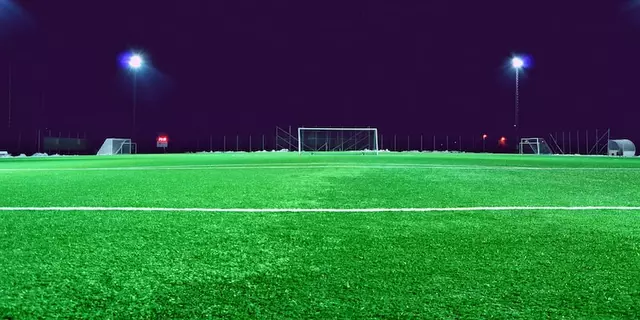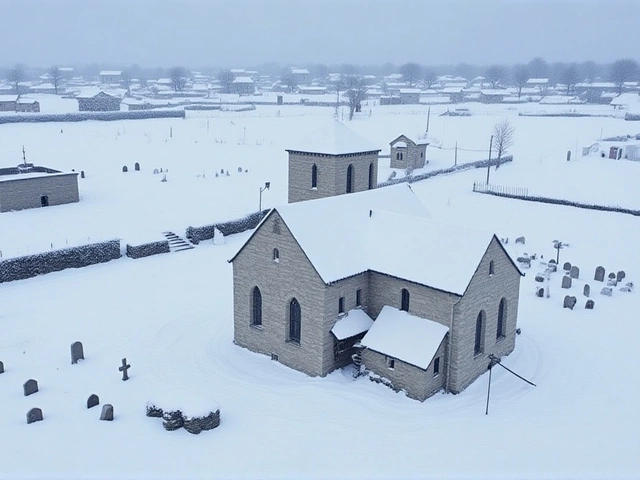All Blacks win 52-26 over Wales, but deeper flaws exposed in season finale
When the final whistle blew at Principality Stadium in Cardiff on Saturday, November 22, 2025, the All Blacks celebrated a 52-26 win over Wales — their seventh try of the night sealing a dominant scoreboard. But the cheers didn’t mask the unease. For all the firepower on display, this wasn’t a statement of dominance. It was a sigh of relief. A late flourish hiding cracks that have been widening all season.
A Hat-Trick for the Ages, But Not Enough
Tom Rogers did something no Welshman had ever done against the All Blacks: he scored a hat-trick. The first came at 306 seconds into the broadcast, a darting run after a clever offload from Kieran Edwards. The second was a blur of pace, slicing through a hesitant New Zealand defense. And the third? A two-on-one finish off a loose kick from Ruben Love. It was historic. Electrifying. And for 15 minutes, it made Wales look like they might just pull off the unthinkable.But the All Blacks didn’t panic. They responded — immediately. At 515 seconds, Caleb Clarke powered over for his second try of the night, a brutal burst through the middle that reminded everyone why this team still carries the weight of expectation. By halftime, the score was 31-19. By full time, 52-26. The numbers told one story. The play told another.
Too Many Missed Tackles — Wales’ Fatal Flaw
According to RugbyAnalyst’s full-match breakdown, published the same day, Wales’ downfall wasn’t a lack of ambition — it was a lack of discipline. "Too many missed tackles," the analysis read, "one-on-one situations where they just weren’t good enough." The numbers don’t lie: New Zealand broke 17 tackles in the first half alone. Will Jordan and Reece Zammitt turned those errors into line breaks, exploiting gaps that shouldn’t have existed.Then came the yellow card. At 609 seconds, Plum Tree went high on a tackle — not malicious, just sloppy. The referee didn’t hesitate. Wales went down to 14 men. And within minutes, their scrum collapsed. At 603 seconds, commentators noted: "The now seven-man Wales scrum gets destroyed." New Zealand didn’t just win the set piece — they dismantled it. The momentum shift was seismic.

A Season Finale That Feels Like a Cop-Out
This match was supposed to be a curtain-raiser for the 2027 Rugby World Cup cycle. Instead, it felt like a cleanup job. One week earlier, the All Blacks had been humbled 38-21 by England at Twickenham Stadium in London. That loss exposed a team struggling with structure, discipline, and mental resilience. Saturday’s win? It didn’t fix any of that.Liam Napier, reporting for the NZ Herald from Cardiff, put it bluntly: "The All Blacks finished their season with another late flourish to ease their burden, but victory over Wales won’t be enough to drastically alter the complexion of their year." The scoreboard looked good. The performance? Questionable. There were moments of brilliance — Jordan’s high ball work, Clarke’s power, the backline’s speed — but also too many lazy kicks, slow ruck clearances, and missed defensive assignments.
At 426 seconds into the second half, Ruben Love kicked a low ball into the channel. Jenkins charged it down, and Wales were instantly on the attack. That’s not dominance. That’s vulnerability. And it’s exactly what teams like South Africa and Australia will target next year.
What’s Next for Both Teams?
For Wales, this match was a glimmer. Rogers’ hat-trick proves they have world-class finishers. The physicality was there. The heart was undeniable. But without tighter defense and more consistent set-piece execution, they’ll keep falling short against the elite. As NBC Sports put it: "Things to build on, but there is still some daylight between red and all black on this evidence." That daylight is widening.For the All Blacks, the challenge is deeper. Coach Scott Robertson has a squad full of talent, but the system is fraying. The loss to England wasn’t an outlier — it was a symptom. And this win over Wales? It’s a Band-Aid on a broken bone.
With the World Cup just two years away, the real test begins now. Not in November wins, but in January training camps. Not in crowd-pleasing tries, but in defensive drills that feel endless. The All Blacks don’t need more points. They need more discipline.

Behind the Scenes: The Quilter Nations Series
This match was part of the Quilter Nations Series — the official name for the November internationals sponsored by Quilter plc, the London-based financial firm. The series, now in its third year, has become a critical bridge between the southern and northern hemispheres. For teams like Wales, it’s a chance to test themselves against the best. For New Zealand, it’s a final tune-up before the real grind begins.Principality Stadium, packed with 74,000 fans, delivered the atmosphere rugby craves. But behind the noise, the questions linger. Is this the same All Blacks team that won the 2023 World Cup? Or are they a shadow of their former selves, coasting on reputation?
Frequently Asked Questions
How did Tom Rogers’ hat-trick change the narrative of the match?
Rogers’ hat-trick was the first ever by a Welsh player against the All Blacks, shifting momentum and giving Wales hope. But instead of sparking a comeback, it became a footnote — New Zealand responded with three quick tries in the next 15 minutes, proving their depth and composure under pressure. His performance highlighted Wales’ attacking potential, but also how easily they were outmatched in structure and defense.
Why is the All Blacks’ win considered a "late flourish" rather than a turnaround?
The All Blacks lost to England 38-21 the week before, revealing deep flaws in defense and decision-making. This win over Wales came after a slow start and relied on opportunistic tries, not dominance. Analysts and media like the NZ Herald noted it didn’t fix systemic issues — it merely delayed them. A 52-point game against a team that missed 21 tackles isn’t a revival; it’s a mirage.
What role did Caleb Clarke play in New Zealand’s victory?
Caleb Clarke was the engine of New Zealand’s attack, scoring two crucial tries and consistently breaking the gain line. His physicality in the midfield allowed the backs to operate with space, and his work rate off the ball was among the highest on the field. While Will Jordan dazzled, Clarke delivered the hard yards — the kind of performance that wins games, not just highlights.
How did Wales’ yellow card impact the outcome?
Plum Tree’s 10-minute sin-binning at the 609-second mark turned the tide. With only 14 men, Wales’ scrum — already struggling — was dismantled by New Zealand’s front row. The All Blacks scored two tries in the next seven minutes, turning a 21-19 lead into a 31-19 advantage. It wasn’t just a penalty — it was a tactical death sentence.
What does this result mean for the 2027 Rugby World Cup?
For Wales, it’s a blueprint: attack with pace, but fix your tackles. For New Zealand, it’s a warning. Their 2023 World Cup core is aging, and their defensive systems are breaking down. Without urgent fixes in training camps this winter, they risk being outclassed by South Africa or France in 2027. Wins like this don’t win trophies — consistency does.
Were there any controversial officiating decisions in the match?
Yes. At 524 seconds, a New Zealand try was initially waved off by the TMO, but the crowd noise drowned out the official’s call. Replays showed the ball was clearly loose before the grounding — a penalty was awarded instead. The confusion highlighted the chaos of live officiating under pressure, and added to the sense that this match was more about endurance than excellence.





